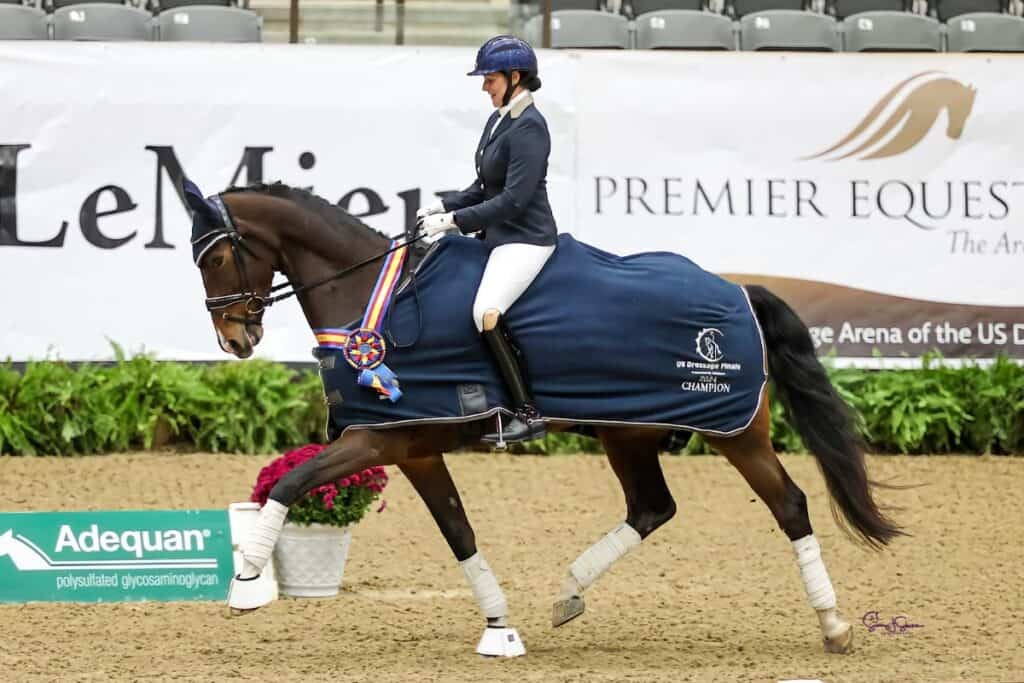by Thomas R. Lenz, DVM, MS
Courtesy of the AAEP and MyHorseMatters.com
Most horse owners know that equine herpesvirus type 1 (Rhino) causes upper respiratory infection in young horses and abortion in pregnant mares, but many probably don't realize that it can also cause a severe neurological disease that affects the horse's brain and spinal cord and may result in paralysis and death. Recently, outbreaks of the neurological form of EHV-1 have occurred at stables in Ohio, Pennsylvania and Virginia as well as in the United Kingdom. In Ohio alone, the disease affected well over 150 horses, resulting in the death of at least 15.
EHV-1 routinely causes upper respiratory infection in young horses (weaning, yearlings, and 2 year olds) resulting in depression, a snotty nose, loss of appetite, and a persistent cough. If a number of young horses are housed or pastured together, most will become sick and then recover uneventfully. Pregnant mares that become infected often abort their foals late in gestation, deliver stillborn foals or weak foals that die within days of birth. In rare instances, adult horses experience the respiratory form of EHV-1 and then develop the neurological form of the disease. Neurological symptoms include incoordination that can progress to the inability to stand, lower leg swelling, the inability to urinate or pass manure, urine dribbling, and reduced tail tone. Some of these symptoms also occur in other neurological diseases such as rabies, EPM, and West Nile Virus infections, so it is important that the animals be examined by a veterinarian as soon as possible. Because EHV-1 is a virus, it does not respond to antibiotics. Therefore, supportive treatment is the only option and is tailored to the individual patient and guided by the severity and range of clinical signs. It usually includes anti-inflammatory drugs, fluids to maintain hydration, and slinging of horses that are unable to stand. In most cases, horses that remain standing have a good prognosis, although recovery may take weeks or months. Horses that go down and are unable to stand have a poor prognosis.
EHV-1 is spread primarily through coughing or sneezing, but can also be carried in fetal tissues, the placenta and uterine fluids from mares that have aborted. Studies have shown that the virus doesn't live long in the environment, but transmission via coughing or sneezing can occur over a distance of up to 35 feet. Direct contact with infected horses as well as contaminated feed, equipment, clothing, and tack can also spread the disease. The good news is that the virus is easily killed by disinfectants. When treating an area where the disease has occurred, remove all organic material such as manure and dirt. Then disinfect all surfaces and equipment with a solution of 1 part bleach (sodium hypochlorite) and 10 parts water. Make sure you wear rubber gloves when handling the disinfectant. Don't forget to wash and disinfect any trailer that has been used to transport sick animals.
Without a doubt, the biggest problem with EHV-1 is that once horses have been infected they can become latent carriers of the virus for the rest of their life. Although latently infected horses are no longer sick or shedding the virus, they carry the virus and can spontaneously begin shedding it during periods of stress. The intermittent shedding by carrier horses is thought to be the source of sporadic outbreaks of the disease, including closed herds where no new horses have been introduced.
Elimination of EHV-1 from a herd is virtually impossible because of the presence of latently infected animals. However, a good strategy to reduce the incidence of EHV-1 is the combination of a good vaccination program in conjunction with the implementation of an effective preventive herd-management program. Vaccination schedules vary based on the region of the country, the age of the animals, and the type of work they do for a living, so visit with your local equine veterinarian to get their recommendations for your specific horses. In addition to an aggressive vaccination program, new arrivals, sick horses, and horses returning from shows or other horses facilitates should be isolated for at lease 7 days. If horses at the show were sick or there was a confirmed EHV-1 outbreak, isolate the horses for 21 days. Disinfect all areas of the barn in which a suspect or sick horse has been housed or worked. If an outbreak of the disease occurs in your area, encourage barn personnel and riders to wear leather or rubber boots that can be disinfected in a disinfectant tub at the entrance of the barn.
Segregate horses into the smallest possible groups. Large groups of horses sharing a common airspace can all be inflected by one horse shedding the virus. And finally, if you suspect that your horses have been exposed to EHV-1 or equine influenza virus, take rectal temperatures daily (normal adult body temperature is 100.5°F). If any horse's temperature is elevated, consult your veterinarian immediately.
Disclaimer:
All content provided by Iron Spring Farm is general and for informational purposes only. Content may also not constitute the most up to date information. Nothing in this content is intended to constitute veterinarian advice or to serve as a substitute for consultation with a veterinarian. Always seek the advice of your veterinarian or other qualified provider with any questions that you may have about the treatment and care of your horse.
Any reliance that you place on the information provided is strictly at your own risk and Iron Spring Farm, its officers, employees, representatives, and agents, hereby disclaim any and all liability to any party for any direct, indirect, implied, punitive, special, incidental, consequential or other damages arising directly or indirectly from access to or use of any content provided to the maximum extent permitted by law.










